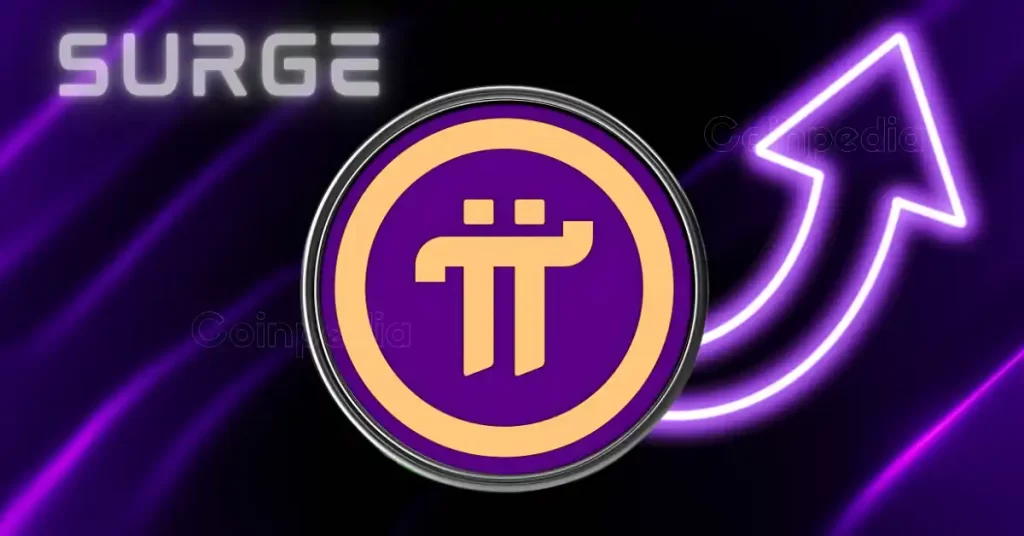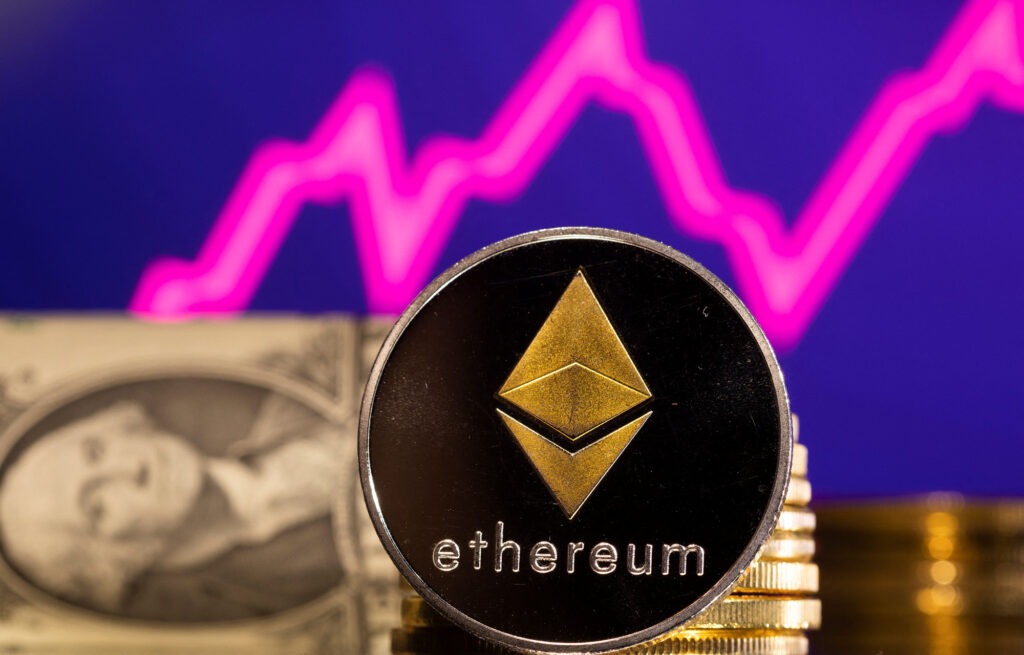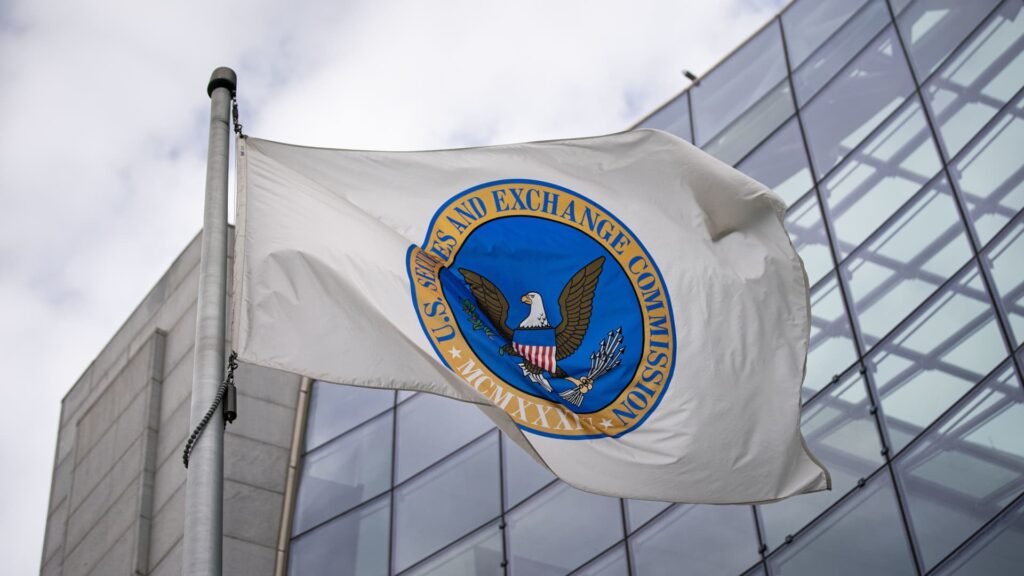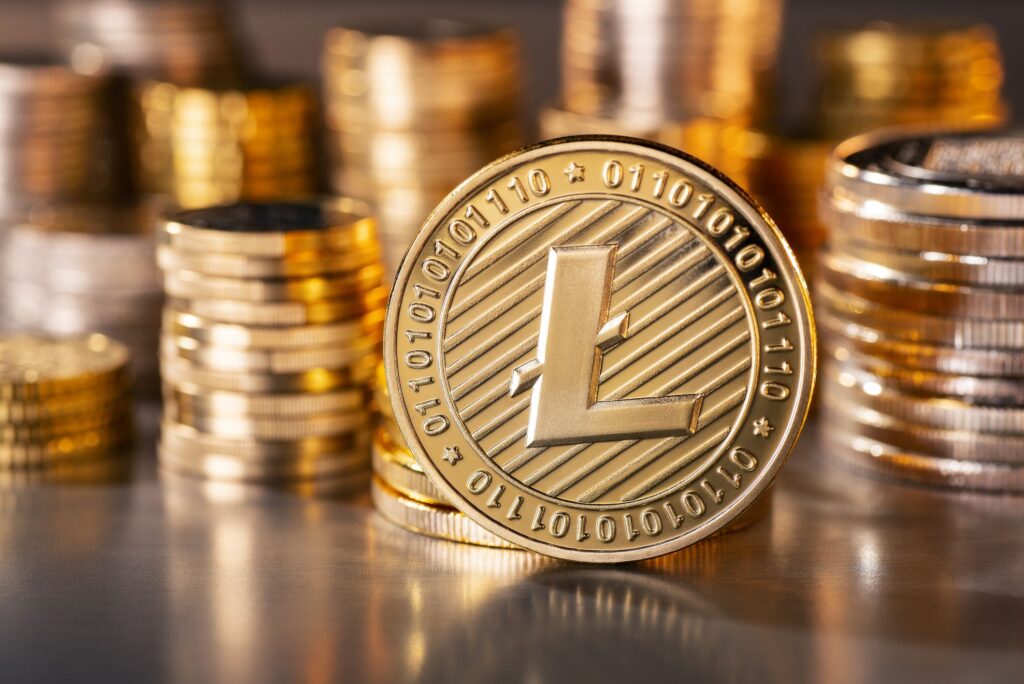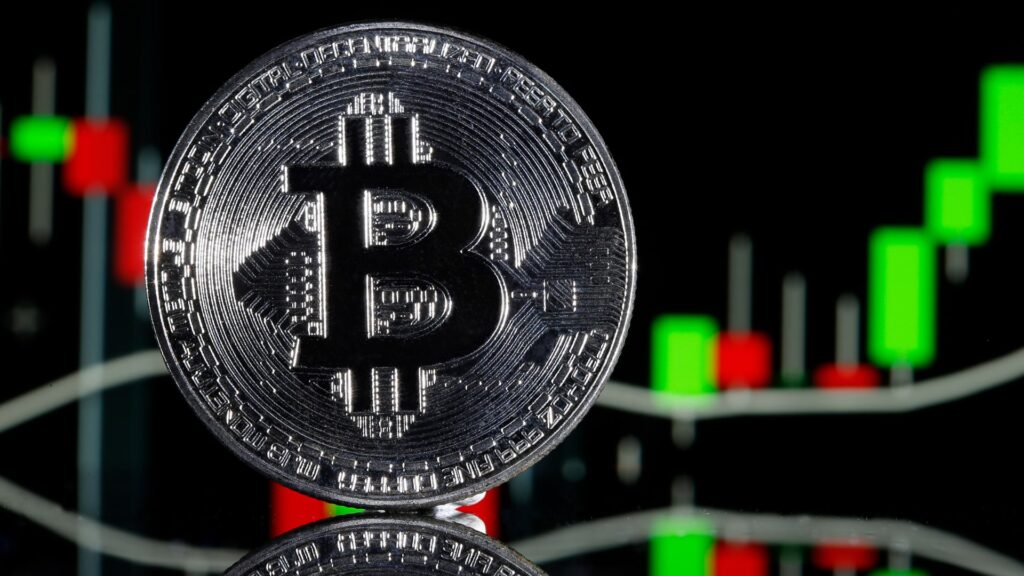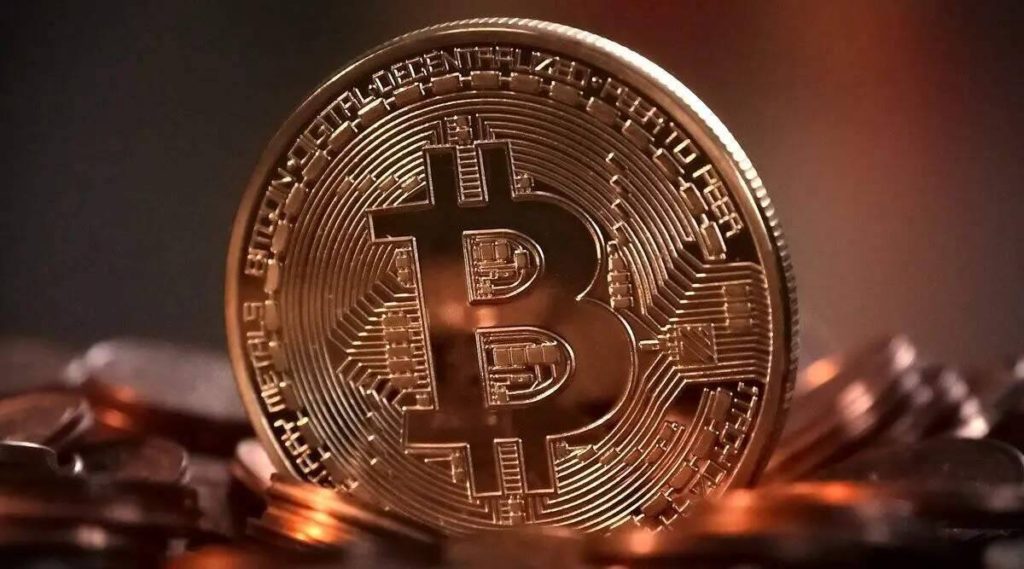With a 60+ million-strong community, including over 19 million KYC’d users, Pi Network is set to revolutionize the crypto sector with the launch of its next phase, the Open Network. Today they announce that this much-anticipated launch will occur at 8:00am UTC on February 20, 2025.
Open Network will bring significant change–external connectivity – to the Layer-1 blockchain that has already been live in its Enclosed Network period since December 2021. The network, along with its fully-developed functionalities, ecosystem components, utility-based applications and the massive crypto-enabled social network will enter a new era where Pi can, for the first time, connect securely with external systems and expand opportunities for Pi Network Pioneers and businesses alike.
Dr. Nicolas Kokkalis, one of two Pi Network Founders, and Head of Technology, explains that the Open Network phase will allow for greater utility within the network: “Pi is the world’s first crypto that users can mine for free on mobile phones which has helped, and will continue to help, bring crypto to the hands of millions of people around the world through accessibility.”
“The Pi blockchain allows people to conduct business with identity-verified individuals and businesses. This feature is unheard of for a Layer-1 blockchain, and opens completely new horizons for blockchain-based utility. Third party apps and services built on Pi can interact directly with KYC-verified people, and people can interact with KYB-verified businesses and crypto services,” added Kokkalis, a Stanford University Ph.D. focusing on combining distributed systems and human-computer interaction to bring cryptocurrency to everyday people.
Dr. Chengdiao Fan, Pi’s other Founder and Head of Product, added that “Open Network is the culmination of our endeavours to build and launch a fully developed and inclusive worldwide peer-to-peer ecosystem and online experience, fueled by Pi, with the focus of it to becoming the most widely used cryptocurrency.”
Pi’s Open Network allows for external connectivity on the Pi Mainnet, which permits the Pi token to interface with other compliant networks and systems. The external connectivity also enables the community and the decentralized world to use new types of utilities, and bridge Pi with real-world businesses and their fiat-based operations.
In a connected world, users can continue to use Pi as a universally understood and accepted medium of exchange, simplifying payments and expanding opportunities across the Pi ecosystem.
Pi has already seen widespread adoption as a medium of exchange, well before Open Network. PiFest 2024—a one week event connecting local Pi-powered businesses with Pioneers—attracted over 27,000 active sellers and 28,000 test merchants across 160 countries. The event showcased Pi’s complete ecosystem for local commerce integration, connecting store discovery through Map of Pi, payments via Pi Wallet, transactions on Pi Mainnet blockchain, and social sharing on Fireside Forum – all seamlessly working across different existing Pi applications.
Over six years of development, including the three-year Enclosed Network period of Mainnet that began in December 2021, Pi Network bootstrapped, grew and prepared for the Open Network era. Specifically, the Enclosed Network allowed Pioneers to complete KYC and migrate their Pi balances to Mainnet, and developers to build apps and utilities for the Pi ecosystem. All the while, the network grew to have over 200,000 nodes run by decentralized community members all around the world, the Core Team built and improved various Pi features and utilities, and Pi developers launched more than 100 Mainnet or Mainnet-ready apps on Pi Network’s Web3 developer platform. Apps in the Pi ecosystem can be accessed and used through the Pi Browser, allowing Pioneers to transact for real goods and services in Pi. Some of these apps are also included in the Ecosystem Interface, which showcases Testnet and Mainnet Pi Apps built by the community.
With Open Network in place, Pioneers will continue to have the ability to mine withrate adjustments in line with the declining exponential issuance model and monthly limits as stated in the Whitepaper. They will also continue to have the ability to use the fully developed network utility, which enables them to engage with Pi Apps, and transact with actual Pi, boosting the ecosystem’s real-world utility.
“As Pi Network enters the Open Network phase, we invite Pioneers, developers, and businesses to explore the collaborative ecosystem which has benefited from their active participation and leadership in driving innovation and building a sustainable decentralized world together,” said Fan.
The altcoin market exhibited resilience following U.S. Federal Reserve Chair Jerome Powell’s recent comments suggesting a cautious approach to future interest rate cuts. Despite Powell’s indication that there’s “no need to hurry” on reducing rates, altcoins experienced minimal declines, leading some analysts to suggest that the market may have already anticipated this stance.
Crypto analyst Matthew Hyland observed, “Crypto received the worst possible news of 2025 today, yet Alts hardly sold off, and some are in the green.” He further speculated that the market might have “already sniffed this news out prior, hence the capitulation a week ago.” Hyland concluded that the absence of a significant sell-off could indicate that “the bottom is in.”
Over the past 24 hours, major altcoins showed modest movements: Ether (ETH) decreased by 3.78%, XRP declined by 1.24%, and Solana (SOL) dropped by 2.20%.
Powell’s remarks to the Senate Banking Committee emphasized that the U.S. economy is “remaining strong” and that there is no immediate need to adjust interest rates.
The crypto community remains divided on the implications of the Federal Reserve’s cautious stance. Some traders argue that waiting for quantitative easing (QE) might not be beneficial, suggesting that significant economic challenges would need to occur before QE is reintroduced. Conversely, others believe that a stable economy with some credit expansion could foster a moderately risk-on environment, potentially benefiting altcoins.
Recent analyses have highlighted concerns about the oversaturation of the altcoin market. With approximately 36.4 million tokens in circulation, some analysts question the viability of future altcoin seasons, suggesting that the sheer volume of tokens could hinder significant market rallies.
While the Federal Reserve’s current monetary policy approach has introduced uncertainty, the altcoin market’s limited reaction suggests that investors may have already factored in these developments. However, concerns about market oversaturation persist, potentially influencing future altcoin performance.
The U.S. Securities and Exchange Commission (SEC) is currently awaiting the Senate’s confirmation of a new chair before establishing a definitive regulatory agenda for digital assets. Commissioner Hester Peirce, who leads the SEC’s Crypto Task Force, emphasized that it is “a little premature” to set such an agenda without a Senate-confirmed chair to guide the process.
Following the departure of former SEC Chair Gary Gensler on January 20, Mark Uyeda assumed the role of acting chair. President Donald Trump has nominated former SEC Commissioner Paul Atkins for the chair position, with the Senate expected to vote on this nomination soon. Peirce noted, “Acting Chairman Uyeda is doing a great job, and the agenda is working—we haven’t stopped working. But we assume that sometime soon, if Chairman Atkins is confirmed as chairman, he’ll come in and want to set his agenda.”
On January 28, President Trump nominated Atkins for an SEC commissioner term ending in June 2031, as Crypto Intelligence reported. As of February 11, the Senate Banking Committee had not yet considered his nomination, which requires a majority vote to advance to the full Senate for confirmation.
Peirce also mentioned that the SEC is “trying to figure out” a path forward for rulemaking on digital assets. In January, an appellate court ruled that it would not mandate the commission to develop clear guidelines for crypto firms but agreed with Coinbase’s position that the SEC made an “arbitrary and capricious” decision in denying a rulemaking request.
Following the establishment of the SEC’s Crypto Task Force, the commission has requested delays in at least two of its previously filed enforcement actions, suggesting that the agency’s efforts in developing a regulatory framework could influence its stance. An Illinois judge granted a 30-day extension in a crypto case against Cumberland DRW, while a District of Columbia court had not responded to a similar request in the commission’s case against Binance at the time of publication.
Currently, the SEC comprises Commissioners Peirce and Uyeda, both Republicans, and Democratic Commissioner Caroline Crenshaw. It remains uncertain whether President Trump intends to nominate a fifth commissioner to complete the leadership team at the financial regulator, pending Atkins’ potential confirmation.
Bloomberg ETF analysts James Seyffart and Eric Balchunas estimate a 90% probability that the U.S. Securities and Exchange Commission (SEC) will approve a spot Litecoin (LTC) exchange-traded fund (ETF) by the end of 2025. They believe Litecoin’s approval process may be more straightforward compared to other cryptocurrencies due to its established regulatory filings and the SEC’s likely classification of it as a commodity.
In contrast, Seyffart and Balchunas assign lower approval probabilities for spot ETFs of other cryptocurrencies: 65% for XRP, 70% for Solana (SOL), and 75% for Dogecoin (DOGE). The analysts note that the SEC’s acknowledgment of Grayscale’s 19b-4 filing to list a spot Litecoin ETF indicates that Litecoin is next in line for approval, following Bitcoin and Ethereum.
The anticipated approval of a Litecoin ETF is part of a broader trend, following the strong demand for spot Bitcoin and Ether ETFs, which have seen significant net inflows since their launches in January and July 2024, respectively. While a Litecoin ETF may not attract the same level of demand, Seyffart suggests that even with modest inflows, such ETFs can be worthwhile for fund companies. He states, “They don’t have to hit it out of the park on a flows basis to be worthwhile from an issuer perspective.”
The final SEC decision deadlines for the proposed Litecoin, Solana, XRP, and Dogecoin ETFs are scheduled between October 2 and October 18, 2025. Seyffart indicates that a Litecoin ETF could potentially launch before these dates.
The analysts also highlight that prior to the 2024 U.S. presidential election, the approval odds for these crypto ETFs, except for Litecoin, were below 5%. The election outcome appears to have positively influenced the perceived likelihood of their approval.
However, regulatory uncertainties persist for other cryptocurrencies. For instance, the SEC’s ongoing lawsuit against Ripple raises questions about XRP’s status, which may need resolution before an XRP ETF can be approved. Similarly, Solana’s classification must be clarified before the SEC can evaluate it under a commodities ETF framework.
Analysts are optimistic about the approval of a spot Litecoin ETF in 2025, viewing it as a significant development in the evolving landscape of cryptocurrency investment products.
On February 10, a solo Bitcoin miner achieved a remarkable feat by successfully mining block 883,181, earning a reward of approximately 3.15 Bitcoin (BTC), valued at over $300,000. This block contained 3,071 transactions and was mined by an individual identified as “unknown.”
Bitcoin miner Marshall Long noted that the miner utilized an implementation of the CKPOOL but appeared not to be directly associated with it. He speculated that the miner might have employed a Bitaxe device, which can be used for solo mining or in mining pools where computational power is combined to enhance the likelihood of solving a block.
The current Bitcoin network hashrate stands at approximately 788.86 million terahashes per second (TH/s), reflecting a slight decrease from the previous day’s 795.29 million TH/s but marking a significant 53% increase compared to the same period last year. A higher hashrate necessitates greater computing power, leading to increased energy costs and longer verification times, which pose challenges for solo miners attempting to validate blocks independently.
Solo miners solving blocks is a rare occurrence due to the substantial hashrate requirements. Typically, large mining firms such as Bit Digital, Riot Blockchain, and Marathon Digital dominate block validation, given their extensive hash power.
As of now, over 19 million of the 21 million total Bitcoin supply have been awarded to miners through block rewards. This event coincides with a recovery in the cryptocurrency markets, following a temporary decline after U.S. President Donald Trump announced tariffs on aluminum and steel, escalating trade tensions. Bitcoin’s price has rebounded, currently trading above $98,000, though it remains below its all-time high of over $109,000 reached on January 20.
This instance underscores the unpredictable nature of Bitcoin mining, where even individual miners with limited resources can occasionally achieve significant rewards.
Michael Saylor, co-founder and executive chairman of MicroStrategy, has resurfaced on social media after a week-long break, sharing a Bitcoin price chart in his first post since his absence.
On Feb. 10, Saylor posted a Bitcoin chart on X (formerly Twitter) without any accompanying text, marking his return after an unusual period of inactivity. Prior to this, his last post was on Feb. 3, when he reaffirmed MicroStrategy’s long-term Bitcoin investment strategy, stating, “We are not sellers.”
Saylor’s social media presence is typically consistent, making his week-long absence stand out. His return to X has sparked speculation among Bitcoin supporters, with some interpreting his silence and subsequent post as a reflection of market developments.
MicroStrategy’s Growing Bitcoin Holdings
Saylor has been one of Bitcoin’s most vocal advocates, with MicroStrategy continually increasing its Bitcoin holdings. As of its most recent purchase, the company owns over 190,000 BTC, cementing its position as the largest publicly traded corporate holder of the asset.
Bitcoin’s price has seen significant fluctuations in recent weeks, briefly surpassing $48,000 before experiencing a pullback. Despite the volatility, institutional interest in Bitcoin remains strong, fueled in part by the approval of spot Bitcoin exchange-traded funds (ETFs) in the U.S.
While Saylor did not provide any direct commentary on Bitcoin’s price action in his latest post, his chart post aligns with ongoing discussions about Bitcoin’s trajectory. The cryptocurrency recently approached key resistance levels, with analysts closely monitoring whether it can sustain momentum in the face of macroeconomic uncertainty.
Community Reactions and Speculation
Saylor’s return to X was met with intrigue from the crypto community, with many questioning the significance of his week-long silence. Some users speculated that he may have been finalizing new Bitcoin acquisitions for MicroStrategy, while others suggested he was simply taking a break.
“Well, if Saylor is back, something big must be coming,” one user commented, hinting at the possibility of an impending announcement from MicroStrategy. Others interpreted his chart post as a bullish signal, viewing it as a subtle endorsement of Bitcoin’s long-term growth potential.
Saylor has long maintained that Bitcoin is the most reliable store of value, frequently criticizing traditional fiat currencies for their inflationary risks. His consistent messaging has made him one of the most influential figures in the cryptocurrency space.
MicroStrategy’s Bitcoin Strategy Remains Unchanged
Despite market fluctuations, Saylor and MicroStrategy have remained steadfast in their approach, continuing to accumulate Bitcoin as part of their corporate strategy. The company’s decision to hold rather than sell its BTC holdings underscores its confidence in Bitcoin’s long-term value proposition.
With Bitcoin’s price movement attracting increased attention from both institutional and retail investors, Saylor’s reappearance on social media has reignited discussions about the asset’s future trajectory. While his week-long absence remains unexplained, his return with a Bitcoin chart suggests that his focus on the cryptocurrency remains as strong as ever.
The United Arab Emirates (UAE) has emerged as a global hub for innovation, with its rapid adoption of cryptocurrency, the metaverse, and artificial intelligence (AI) reshaping its economy. In its pursuit of technological supremacy, the UAE is actively fostering an environment conducive to digital transformation, attracting investors, entrepreneurs, and visionaries from around the world.
A Crypto-Friendly Economy
The UAE has positioned itself as one of the most progressive nations in terms of cryptocurrency adoption and regulation. Dubai and Abu Dhabi have introduced comprehensive legal frameworks to regulate and encourage the crypto industry. The Dubai Virtual Asset Regulatory Authority (VARA), established in 2022, provides clear guidelines for crypto exchanges, digital asset firms, and blockchain enterprises. This regulatory clarity has made the UAE an attractive destination for crypto startups and institutional investors alike.
In addition, Abu Dhabi Global Market (ADGM) has developed a robust regulatory framework for digital assets, enabling businesses to operate with legal certainty. Binance, the world’s largest cryptocurrency exchange, has secured operational approval in Dubai, while Kraken and other major players have established a presence in Abu Dhabi. By embracing digital currencies, the UAE is cementing itself as a financial innovation hub, encouraging both institutional and retail adoption.
Beyond regulation, the UAE government has actively explored the integration of blockchain technology within public services. The Dubai Blockchain Strategy aims to transition government transactions onto blockchain platforms, enhancing transparency, security, and efficiency. Furthermore, the UAE Central Bank is developing a central bank digital currency (CBDC) to modernize the financial system and improve cross-border transactions.
The Metaverse Revolution
The UAE is not only embracing crypto but also investing heavily in the metaverse, with Dubai leading the charge. In 2022, Dubai launched its ambitious Metaverse Strategy, which aims to generate 40,000 virtual jobs and contribute $4 billion to the emirate’s economy by 2030. The initiative seeks to make Dubai one of the top 10 metaverse economies globally, fostering innovation in virtual reality (VR), augmented reality (AR), and Web3 technologies.
Government-backed entities, including the Dubai Future Foundation and the Abu Dhabi Investment Office, are investing in metaverse startups and infrastructure. The Dubai Municipality has even announced plans to create a virtual city where residents can interact in a fully immersive digital environment. Businesses are also leveraging the metaverse, with real estate developers showcasing virtual properties and luxury brands launching digital stores tailored for metaverse consumers.
Tourism and retail, two of the UAE’s strongest economic pillars, are also set to benefit from metaverse integration. Airlines such as Emirates have announced metaverse-driven experiences to enhance customer engagement, while retail giants are adopting virtual shopping platforms to cater to tech-savvy consumers. These initiatives highlight the UAE’s vision to be at the forefront of digital innovation.
Artificial Intelligence As a Priority
AI is at the heart of the UAE’s digital transformation strategy. The country’s leadership has made AI development a national priority, exemplified by the appointment of the world’s first Minister of State for Artificial Intelligence in 2017. The UAE AI Strategy 2031 aims to position the nation as a global leader in AI, with plans to integrate AI across various sectors, including healthcare, finance, transportation, and public services.
Dubai’s Smart City initiative and Abu Dhabi’s AI research efforts are driving AI adoption in governance and business operations. The country is also home to some of the world’s most advanced AI-driven projects, such as the Mohamed bin Zayed University of Artificial Intelligence (MBZUAI), the first university dedicated solely to AI research.
AI is transforming industries across the UAE, from autonomous transportation solutions to AI-powered healthcare diagnostics. The UAE’s embrace of AI is evident in initiatives such as the Dubai Police’s use of AI-powered surveillance and the implementation of smart traffic systems to reduce congestion. In finance, AI-driven algorithms are optimizing investment strategies, fraud detection, and customer service automation.
A Magnet for Global Talent and Investment
The UAE’s proactive approach to crypto, the metaverse, and AI has positioned it as a prime destination for global talent and investment. The government has introduced business-friendly policies, including 100% foreign ownership in various tech-related sectors and long-term residency visas for entrepreneurs, tech professionals, and investors.
International firms are flocking to the UAE to capitalize on its supportive regulatory environment, strategic location, and tax-friendly policies. Events like the Dubai Future Blockchain Summit and AI Everything attract industry leaders and innovators, reinforcing the UAE’s reputation as a technology-driven economy.
The University of Austin is set to establish a pioneering Bitcoin investment fund, reflecting the increasing integration of cryptocurrency within U.S. academic institutions. The university plans to allocate over $5 million to this fund, which will be part of its $200 million endowment.
Chun Lai, the foundation’s chief investment officer, emphasized the institution’s proactive approach, stating, “We don’t want to be left behind when their [cryptocurrency’s] potential materializes dramatically.”
This initiative follows recent developments in higher education’s engagement with digital assets. Notably, Emory University recently disclosed a $15 million investment in Bitcoin through Grayscale’s spot Bitcoin exchange-traded fund (ETF), marking it as the first U.S. university endowment to report such holdings.
The University of Austin intends to maintain its Bitcoin holdings for a minimum of five years. Chad Thevenot, senior vice president for advancement at the university, explained the strategy: “We think there is long-term value there, just the same way that we might think there is long-term value in stocks or real estate.”
Beyond academia, cryptocurrencies are gaining traction among retirement funds, indicating a broader shift in financial strategies. A recent Bitget Research report revealed that up to 20% of Gen Z and Alpha are open to receiving pensions in cryptocurrency. Furthermore, 78% of respondents expressed greater trust in “alternative retirement savings options” over traditional pension funds, highlighting a significant move towards decentralized finance and blockchain-based solutions.
Gracy Chen, CEO of Bitget, commented on this trend: “Younger generations are no longer content with one-size-fits-all pension systems. They’re looking for modern solutions that give them more control, flexibility, and transparency.”
As of January 2025, 40% of individuals in these younger demographics had already invested in cryptocurrency, underscoring the growing acceptance and integration of digital assets in various sectors.
The University of Austin’s initiative signifies a notable step in the evolving relationship between higher education and cryptocurrency investments, potentially setting a precedent for other institutions to follow.
Cryptocurrency exchange Coinbase now holds over $420 billion in digital assets, making it larger than the 21st biggest bank in the United States by total assets. This milestone highlights the rapid expansion of the crypto industry and Coinbase’s growing influence in the financial sector.
As the third-largest centralized cryptocurrency exchange (CEX) by trading volume, Coinbase continues to solidify its position as a key player in the market. Its assets under management (AUM) surpass those of New York Community Bancorp (NYCB), which manages $112.9 billion in assets.
Coinbase’s Growth Compared to Traditional Banks
Coinbase CEO and co-founder Brian Armstrong emphasized the significance of the company’s AUM in a post on X (formerly Twitter) on Feb. 7.
“If you think of Coinbase like a bank, we now hold about $0.42T in assets for our customers, which would make us the 21st largest bank in the US by total assets, and growing,” Armstrong wrote.
He also pointed out that Coinbase’s standing among brokerage firms is equally notable. “If you think of us more like a brokerage, we’d be the 8th largest brokerage today by AUM,” he added.
The comparison to NYCB is particularly striking, as the bank recently reported a $260 million quarterly loss in Q4 2023 following its acquisition of the failed Signature Bank, which had been known for its crypto-friendly policies. In contrast, Coinbase posted a $273 million net profit for the same quarter, marking its first profitable period since Q4 2021.
The Future of Crypto in Financial Services
Armstrong believes cryptocurrency will play a crucial role in reshaping financial services, ultimately consolidating multiple banking and investment functions into a single, crypto-powered financial account.
“With crypto, the line between these categories is blurring,” he explained. “In the updated financial system, you will have a single primary financial account which serves all these functions. A greater percentage of global GDP will run on more efficient crypto rails over time.”
He further argued that this evolution will lead to “sound money, lower friction transactions, and greater economic freedom for all.”
Challenges to Mass Adoption
Despite Coinbase’s success, Armstrong and other industry leaders acknowledge that cryptocurrency adoption still faces significant barriers. Chintan Turakhia, senior director of engineering at Coinbase, spoke about these challenges at EthCC.
“If our goal is to bring in the next billion users — and let’s start with just 100 million — we have to take all those friction points out,” Turakhia stated.
The cryptocurrency sector continues to evolve, and as companies like Coinbase expand their influence, the traditional financial industry is taking notice. Whether crypto exchanges will fully integrate into mainstream banking or continue operating as distinct entities remains to be seen, but for now, Coinbase’s growing AUM signals a shift in how digital assets are perceived in the broader financial landscape.
Bybit, the world’s second-largest cryptocurrency exchange by trading volume, has released its latest weekly crypto derivatives report in collaboration with Block Scholes. The report provides an analysis of the past week’s sell-off and movements in the options market.
A broad market retreat wiped out an estimated $10 billion in open interest, following an active Friday in the 24/7 crypto markets. Among major tokens, BTC was the only one maintaining positive funding rates, while ETH faced significant turbulence, with its options market signaling further downward pressure.
Trump Sell-Off
On Feb. 3, Trump’s tariff threats triggered a major sell-off across markets, including crypto and U.S. equities. The crash erased $3.1 billion in perpetual swap open interest across BTC, ETH, XRP, and SOL. Ben Zhou, co-founder and CEO of Bybit, noted, “$8-10B in total liquidations” as leveraged positions were wiped out. Trading volumes hit a monthly high of $31 billion in perpetual swaps on Feb. 2 as traders rushed to close positions.
Altcoins Struggle
The crypto market continued to struggle after another rough Monday. Funding rates for perpetual swaps dropped sharply as traders exited long positions. BTC, however, maintained neutral funding rates, showing relative strength amid the volatility.
Ethereum to Fall Further
ETH has been less resilient than BTC during the downturn. Spot prices dipped below $2.5K, though open interest remained stable due to lower-than-expected options market volatility. However, realized volatility surged to nearly 140%, and the options term structure suggests further downside risks that may not yet be fully priced in.



